Cyclops
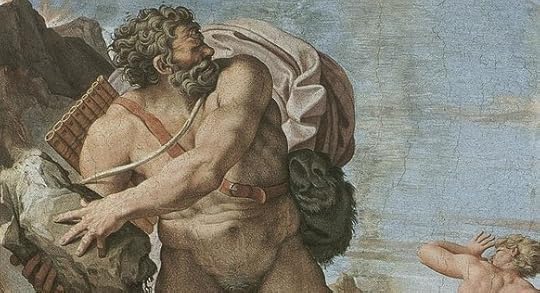
A cyclops is described in Greek legend as one of several one-eyed giants. In Homer, the Cyclops were cannibalistic monsters. Yet they are all defined by the large single eye that is centered in the center of the creature’s face and gigantic size. According to legend, the Cyclops had only one eye after making a deal with Hades in which they traded their eye for the ability to see the future. So, what sparked the myth?
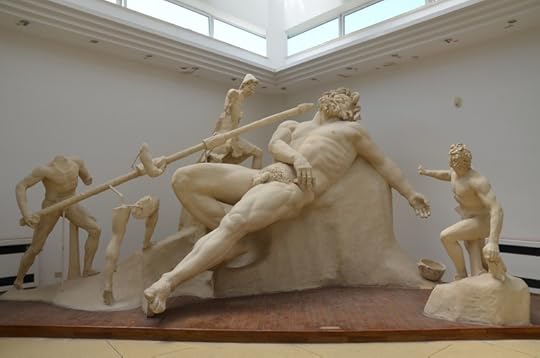
The name Cyclopes comes from the Greek work Kuklos and ops meaning circle- eyes. The name is a literal descriptor of the creature as Cyclops tend to have a single circle-shaped eye in the center of their foreheads.
The first recorded occurrence of the Cyclops is during the works of Hesiod and Homer in the 7th century BCE. The creatures worked with Zeus to defeat the Titans and install the gods in Olympus. These myths have been around for a long many generations. What was the inspiration behind them?
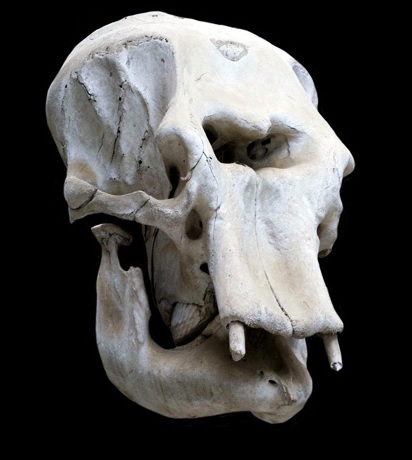
In 1914, paleontologist Othneio Abel proposed that the fossil skulls of Pleistocene dwarf elephants inspired the myth of cyclops. These extinct animals are commonly found in the coastal caves of Italy and Greece and may have given rise to the Polyphemus stories. These animals are believed to be descended from isolated populations of wooly mammoths that adapted to island life. The elephants went extinct around the end of the Ice Age, possibly due to climate change and human interaction.
The large, central nasal cavity where the trunk attaches in the skull may have been interpreted as a large single eye socket. If we look at contemporary sculptures of cyclops, they often depict the creature with the single eye in the center of the forehead but they also show two closed eyes below. This could further the myth of Cyclops as they traded the two normal eye sockets seen in the elephant skull for the central socket in the center of the forehead.
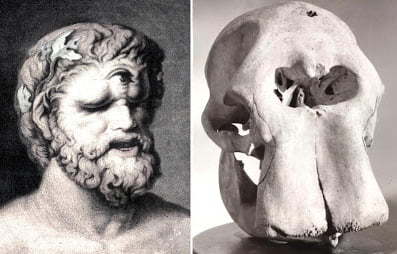
The size of the animal – even though it is a dwarf elephant – would be substantially larger than a human. Dwarf elephants ranged in size from 1.5 -2.5 meters in length. They lived across the Mediterranean islands and in now-underwater caves across the coast.
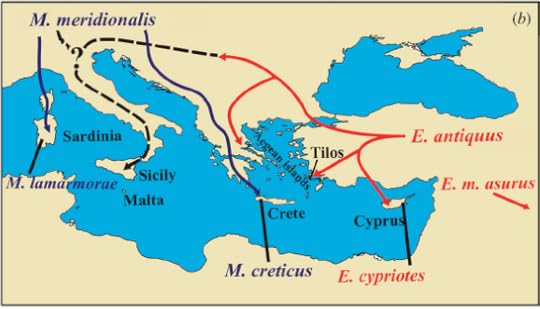
After these creatures went extinct, their bones remained. As the islands were colonized, people once again discovered the creatures. These interesting creatures sparked an equally interesting myth.
Sources:
Athanassiou, A.; Van der Geer, A. A. E.; Lyras, G. A. (2019). “Pleistocene insular Proboscidea of the Eastern Mediterranean: A review and update”. Quaternary Science Reviews. 218: 306–321.
Mayor, Adrienne (2011), The First Fossil Hunters: Dinosaurs, Mammoths, and Myth in Greek and Roman Times, Princeton University Press, 2011.
https://www.greek-gods.info/monsters/cyclopes/
https://education.seattlepi.com/character-traits-cyclops-book-the-odyssey-6629.html



